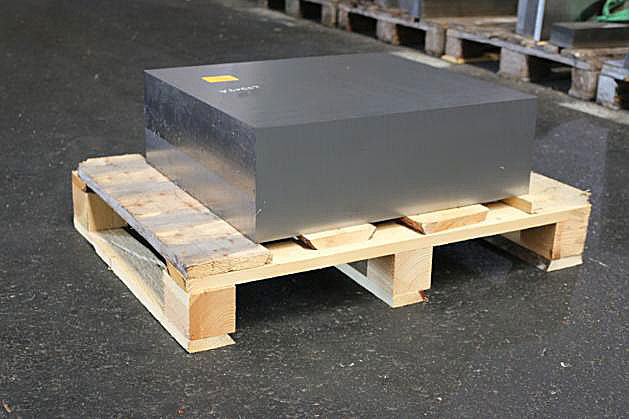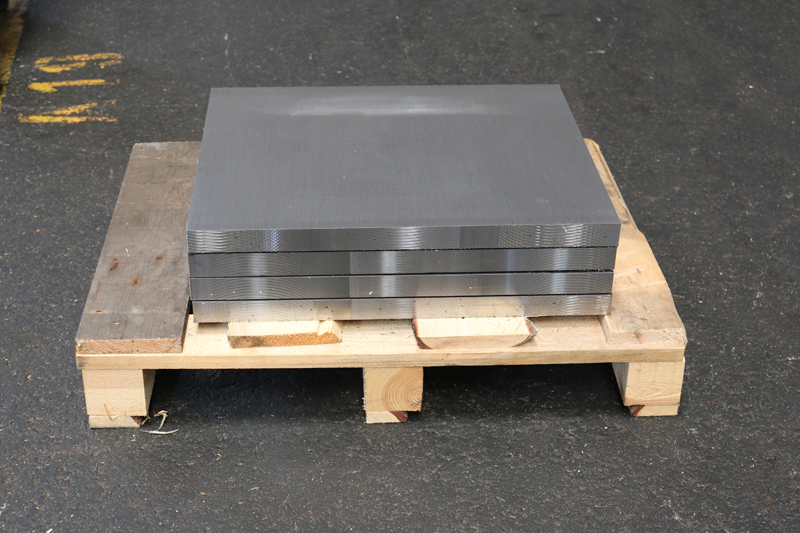AISI 430 F
ANY SIZE – ANY TIME
Your specialist for AISI 430 F & 1.4104 sawn steel from forged billets. We provide metal cutting services.


AISI 430 F is a tempered martensitic chromium steel that is resistant to rust and acid. The addition of sulfur improves machinability, but the corrosion resistance is reduced by the sulfur despite the high chromium content. Discover our high-quality rectangle bar AISI 430 F products designed for various industrial applications.”
Overview of the most important steel AISI 430 F:
SS 2383, UNS S43020, AFNOR Z13CF17, BS 441S29, UNI X10CrS17, JIS SUS430F, GB Y10Cr17, 1.4104
Applications of AISI 430 F:
The main use of AISI 430 F stainless steel is in media that cause pitting or crevice corrosion. In addition, due to its excellent machinability, this stainless steel is used in the automotive industry, spindle and screws, hydraulics and as structural parts in water and steam.
In the manufacture of screws, axles, spindle and nuts and fittings, stainless steel alloy 430f steel magnetic is also used.
Properties of 430F steel:
| Weldability: | bad |
| Machinability: | good 7 (1 = poor – 10 = good) |
| Polishing: | not possible |
| Corrosion resistance: | low |
| Corrosion class: | 2 (0 = weak – 5 = good) |
| Magnetisability: | available |
Forging: Care is required during forging, as a ferritic-austenitic microstructure is formed due to the high sulfur content. During forging, the martensitic material is heated slowly to 850°C, with a progressive increase to 1,100°C – 1,130°C. The forging process takes place at 1,130°C and 750°C.
Welding: AISI 430f steel is usually not welded. The mechanical-technological values in the weld seam and the heat-affected zone can be very different from the base material without additional post-weld heat treatment.
Soft annealing: Soft annealing of the material takes place at 750°C to 850°C. This is followed by furnace or air cooling.
Corrosion resistance: The high content of sulfur affects the corrosion resistance of AISI 430F.
Cold forming: Cold forming is possible with SS 430F stainless steel.
Hardening: The ferritic steel can be hardened at 950°C to 1070°C. The subsequent cooling should be carried out in the cooling water. Subsequent cooling should be carried out in the media of polymer, oil or air.
Processing:
| Cold forming | is possible |
| Spent processing | is possible |
| Cold heading | uncommon |
| Free-form and drop forging | rare |
| Polishing | not possible |
Heat treatment:
| Temperature in °C | Cooling | |
| Hot forming | 1.100 – 800 | air |
| Heat treatment | ||
| Soft annealing (+ A) | 750-850 | furnace, air |
| Tempering (+ QT) | ||
| Hardening | 950 – 1.070 | polymer, oil, air |
| empering (+ QT650) | 550 – 650 | air |
Physical Properties:
| Density in kg/dm3 | 7,7 |
| Electrical resistance at 20°C in (Ω mm2)/m | 0,7 |
| Thermal conductivity at 20°C in W/(m K) | 25 |
| Specific heat capacity at 20°C in J/(kg K) | 460 |
Chemical composition of AISI 430 F:
| AISI 430F X14CrMoS17 |
C | Si | Mn | P | S | Cr | Mo | Ni | V |
| min. | 0,10 | 0,15 | 15,5 | 0,20 | |||||
| max. | 0,17 | 1,0 | 1,50 | 0,04 | 0,35 | 17,50 | 0,6 |
AISI 430F:
flat, forged

Benefits of sawn cuts of AISI 430 F:
Due to the sawing process, the structure of the workpiece material shows much less unintentional deformation and material hardening than, for example, oxyfuel cutting.
Therefore, the workpiece already machined by the saw has a homogeneous structure at the edge, which does not change in the material continuation.
This circumstance allows the workpiece to be finished immediately by milling or drilling, there is no need for soft annealing or similar.
Produced to highest standards

Quick delivery
From stock in Europe

Our expert knowledge about AISI 430F
What are the key properties of AISI 430F stainless steel?
AISI 430F stainless steel is known for its good corrosion resistance, excellent machinability, and moderate strength. It contains 16-18% chromium and 1% molybdenum, which enhance its corrosion resistance. The addition of sulfur improves its machinability.
How does AISI 430F compare to other stainless steels like 304 or 316?
AISI 430F has better machinability due to its sulfur content but lower corrosion resistance compared to 304 and 316. While 304 and 316 are austenitic and non-magnetic, 430F is martensitic and magnetic. 316 also contains molybdenum, which provides superior corrosion resistance in harsh environments.
What are the common applications of AISI 430F stainless steel?
AISI 430F is commonly used in the manufacturing of precision parts such as screws, bolts, and nuts. It is also used in the automotive industry, mechanical engineering, and the production of household appliances.
Is AISI 430F suitable for high-temperature applications?
AISI 430F is not generally recommended for high-temperature applications due to its lower heat resistance compared to other stainless steels like 304 and 316. It performs better in moderate temperature environments.
What are the machining characteristics of AISI 430F?
AISI 430F is highly machinable due to the addition of sulfur, which acts as a lubricant during machining. It allows for high-speed machining and is often used when precision and efficiency are required. However, the sulfur addition can slightly reduce its corrosion resistance compared to other grades.

